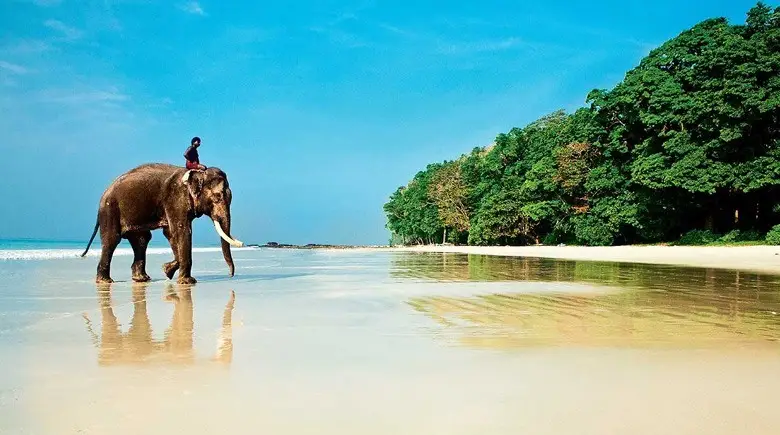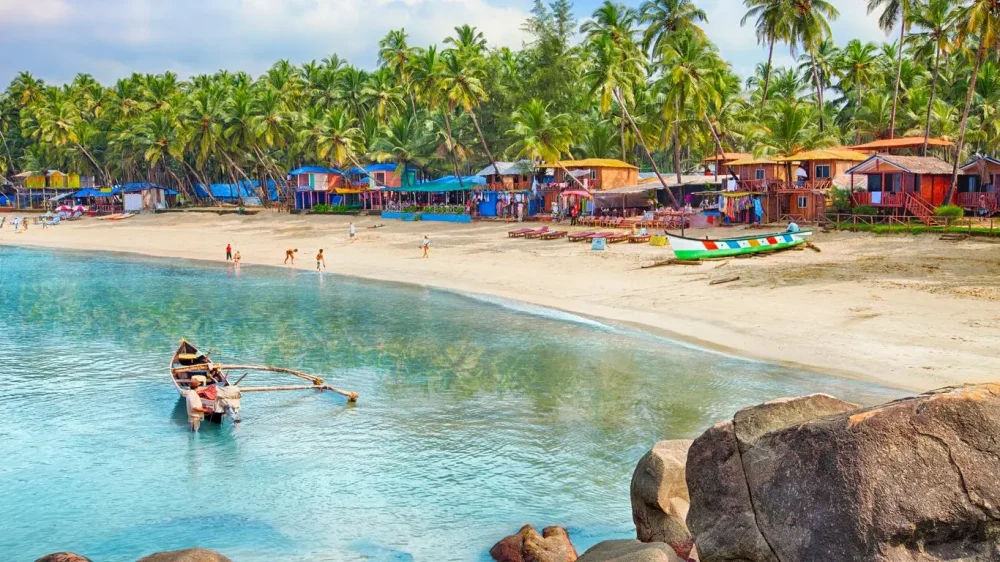It is hard to find another country with as many enduring stereotypes as India. The image that has been shaped over decades has grown from movies, TV shows, and travel blogs. Today, myths about India not only distort reality but also repel tourists, hindering an objective perception. Let’s talk about them in more detail and tell you what the situation is really like in the country.
Talks about poverty sound louder than actual assessments. According to official data from NITI Aayog, the poverty rate in India is projected to decrease to 14.9% by 2024. Beggars in metropolises are regulated by local authorities, and in tourist areas, by the police. Myths about India amplify the image of endless poverty, but it does not reflect the real dynamics.

In Mumbai, for example, beggars are not more common than in major cities in Latin America or Southeast Asia. So, the question “is it true that there are many starving beggars in India” has a straightforward answer: yes, poverty exists, but there is no massiveness or aggression in this process.
In Indian culture, the ability to bargain is equated with respect for the interlocutor. Tourist traps exist — as in any country with a high influx of foreigners. However, the claim of widespread deception is refuted by complaint statistics. According to the Indian Ministry of Tourism, less than 0.04% of complaints are related to fraud.
The phrase “crafty Indians” is a typical stereotype that does not reflect the real situation. Traders in Agra and Jaipur adjust prices based on demand. This is not deception but a market strategy. Myths about India replace cultural features with negative stereotypes.
The country’s hotel industry offers over 2 million certified rooms. From five-star brands like Taj and Oberoi to clean and modern guesthouses, sanitary standards are maintained. Cockroaches in hotels are a thing of the 90s.
However, climate should not be ignored. In tropical regions, insects are more active, but civilized hotels regularly carry out disinfection. Myths about India do not reflect real changes in the level of service, which have become noticeable after 2015.
There is a clear distinction between places of worship and tourist zones in the state. Cows do not appear en masse on the beaches in Goa. In villages — yes, by the roads — possibly, on the promenade — extremely rarely.
Here, a cow is not just an animal but a cultural symbol. The state has brought resort infrastructure to a level familiar to European tourists. The government allocates a budget for shelters for sacred animals to prevent them from migrating to tourists. Myths about India exploit exoticism but do not explain the systemic regulatory measures.
Stereotypes about the country often stem from contrasts: Western order versus Eastern diversity. Dirt is a result of infrastructure overload in metropolises, not systemic negligence. Private contractors maintain cleanliness in tourist areas.
Superstitions are part of traditional culture. It is not religious fanaticism but rather a part of the visual language: amulets on cars, garlands in temples, pujas in shops. Most Indians seamlessly combine these symbols with a high-tech way of life. According to the Nasscom report, the country ranks second globally in the number of IT specialists.
Food courts in malls, hotel restaurants, Ayurvedic cafes — all operate according to FSSAI standards. Inspections are conducted quarterly, and in the last 3 years, less than 2% of serious violations have been found.
Myths about India regarding insects in food do not consider the scale of the country and the difference between street and official gastronomy. Like in any other country, it is advisable to choose verified places. A service with a rating above 4.5 on Google Maps or Zomato guarantees safety.
Objective fact: India is a country with the most affordable prices for services among popular Asian destinations. The average cost of a day in the country is $40–50, including accommodation, transport, and meals.
Deception occurs in high tourist flow areas — as in Egypt, Turkey, Italy. However, the number of such cases does not exceed global averages. Myths about India turn individual cases into generalizations, failing to show how financially transparent the country is with proper planning.
Beaches with Blue Flag certification, low crime rates, developed infrastructure for yoga and retreats. According to the Indian Ministry of Tourism, Goa annually welcomes over 2 million foreign tourists.
Why you should go to Goa is a question easily answered by facts: 300 sunny days a year, a mild climate, visa-free regime with an e-visa, affordable flights (from $380 round trip from Moscow), and a variety of beaches. Myths about India do not hinder Goa from remaining a leader among beach destinations in South Asia.
Before traveling to India, many rely on false perceptions formed decades ago. But the country is changing — infrastructure is improving, services are reaching new levels, and travelers are becoming more comfortable. It’s time to look at the country without distorted expectations.
Here are the key myths about India that do not stand up to scrutiny:

These stereotypes are no longer relevant — India has long surpassed foreign clichés. A conscious approach to the itinerary, accommodation, and information turns the trip into a deep and comfortable journey.
Enduring myths about India distort reality and prevent seeing the country as it is. Notions of total poverty, widespread dirt, scams, and chaos are outdated and do not align with current facts. The Republic of India is not an extreme but a growing country with culture, service, and tourism potential.

India’s tourist geography encompasses coastal zones, mountain ranges, cultural valleys, desert oases and forest plateaus. India’s resorts are not limited to beaches alone. They form a mosaic picture where each region reveals its own climate, rhythm and holiday rituals. Ayurvedic practices, ocean walks, meditation retreats and trekking routes in the Himalayas are equally in demand …

Travelling to the district reveals to tourists a completely different face of India – tranquil, peaceful and immersed in nature. It hides pristine beaches, ancient temples, ayurvedic centres and protected corners where time seems to slow down. Holidays in South Goa are the choice of those who are looking for something interesting and unusual to …